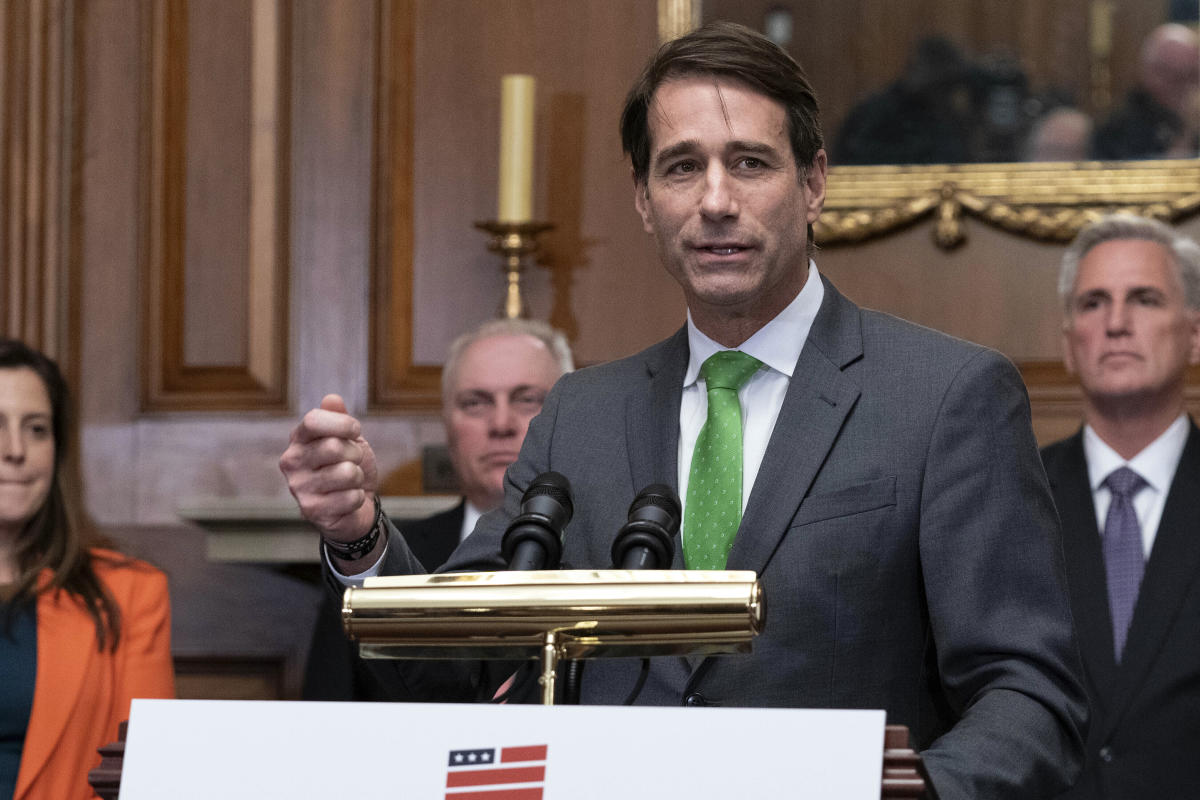NEW ORLEANS (AP) — Politics and race are both factors in an ongoing lawsuit over Louisiana’s new congressional maps. How much weight each carries is a key question for three federal judges whose ruling could affect the balance of power in the next Congress.
At issue is a congressional ticket that was approved this year with the support of the state’s new governor, Jeff Landry — to the consternation of at least some of his fellow Republicans.
The map creates a new, majority-black congressional district in Louisiana, at the expense of a white Republican incumbent, Rep. Garret Graven, who endorsed another Republican in last fall’s gubernatorial election. Given Louisiana’s voting patterns, a predominantly black district would be more likely to send a Democrat to Congress.
Twelve self-identified non-African American voters argued in a lawsuit that the new predominantly black district constitutes illegal textbook racial gerrymandering.
That is not the case, say the proponents of the new map. They argue that politics had the biggest influence on drawing the new district boundaries. They say the new map protects most incumbents and brings together the black population in a way that complies with the federal Voting Rights Act, giving Louisiana, which is about one-third black, a second majority-black district of the six.
They also pointed to the plan’s Republican proponents, who said during legislative debates in January that they wanted to protect four GOP-held House districts, including those of House Speaker Mike Johnson and Majority Leader Steve Scalise.
That the new map put Graves in political jeopardy by placing him in the new, mostly black district is further evidence that race was not the only motivating factor, the map’s proponents said in brief statements and testimony at a conference last week. hearing in Shreveport.
“We all know that one of the main reasons it was drafted the way it was was because Governor Jeff Landry wants to get rid of Congressman Graves,” said Rep. Mandie Landry, a New Orleans Democrat who testified at the hearing. in a social media post. Landry has no relationship with the governor.
State Sen. Cleo Fields, a Black Democrat from the Baton Rouge area who served in Congress in the 1990s, has already filed to run for the newly configured district.
Whatever the three justices decide will likely be appealed to the U.S. Supreme Court. It is unclear when the judges will rule, but time is running out. State election officials say they need to know the configuration of districts by May 15 to prepare for the fall elections.
The controversy in Louisiana, as in other states, arose because new government district boundaries are redrawn every ten years by the legislature to account for population shifts reflected in census data. Louisiana’s Republican-dominated legislature drew a new map in 2022 that, despite some border shifts, favored all six current incumbents: five white Republicans and one black Democrat. Then-Government. Johannes Bel Edwardsa Democrat, vetoed the map, but the majority Republican legislature overrode the veto, leading to a lawsuit in Baton Rouge.
In June 2022, Baton Rouge-based U.S. District Judge Shelly Dick issued an injunction against the map, saying challengers were likely to win their lawsuit claiming it violated the Voting Rights Act. When the case was appealed, the U.S. Supreme Court in June issued an unexpected ruling in favor of black voters in a congressional redistricting case in Alabama.
Dick sided with challengers who said the 2022 map put a significant number of voters in one district — District 2, which stretches from New Orleans to the Baton Rouge area — while “cracking” the remaining Black population by dividing it over other, predominantly white districts.
In November, the 5th U.S. Circuit Court of Appeals gave the state a January deadline to draw a new congressional district. Landry, who was the state’s attorney general when he was chosen to succeed Edwards’ term-limited job, called a special session to redraw the map, saying the Legislature should do so instead a federal judge.
The new map does not resemble the sample maps that proponents of a new majority-black district had previously proposed, which would have created a new district largely covering the northeastern part of the state.
The new, majority-black district cuts diagonally across the state, connecting Shreveport in the northwest with parts of the Baton Rouge area in the southeast. And while supporters applaud the creation of a new black majority district, plaintiffs say it results in “explicit, racial segregation of voters.”
The judges hearing the case are U.S. District Judges David Joseph and Robert Summerhays, both nominated by former President Donald Trump; and Judge Carl Stewart of the 5th U.S. Circuit Court of Appeals, nominated by former Democratic President Bill Clinton.
The judges have not yet given an indication of when they will make a ruling. “We’ll have to know soon,” Mandie Landry said, referring to the upcoming election.






